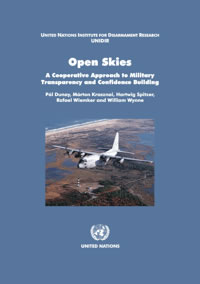This extensive study traces the longest held idea in the history of modern arms control. Proposed in the mid-1950s as a bilateral US-Soviet measure, a multilateral Open Skies Treaty comprising all NATO and former Warsaw Treaty members, including the main successor states to the former Soviet Union, was signed in 1992.
Putting into practice the principles of cooperation, confidence-building and transparency, the treaty enables states to overfly and observe the territory of one another. Crews of the inspecting and inspected states have to work closely together to attain their objectives. As the imagery taken during observation flights is accessible to all states parties, the treaty places all members on an equal footing.
Open Skies images have already proved their efficacy in verifying as well as monitoring several arms control agreements. Technically, Open Skies images are equivalent and often superior to those taken by commercial satellites or comparable sources, and are more cost-effective. A flexible, modern and forward-looking treaty, the Open Skies Treaty is an instrument that can and should be adapted to current security needs and technological possibilities.
Citation: Pál Dunay, Márton Krasznai, Hartwig Spitzer, Rafael Wiemker and William Wynne (2004). "Open Skies: A Cooperative Approach to Military Transparency and Confidence Building", UNIDIR, Geneva.
